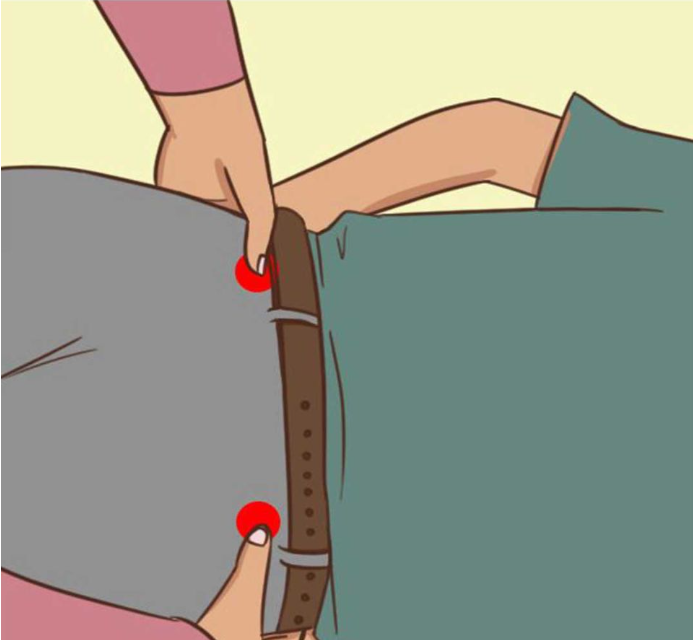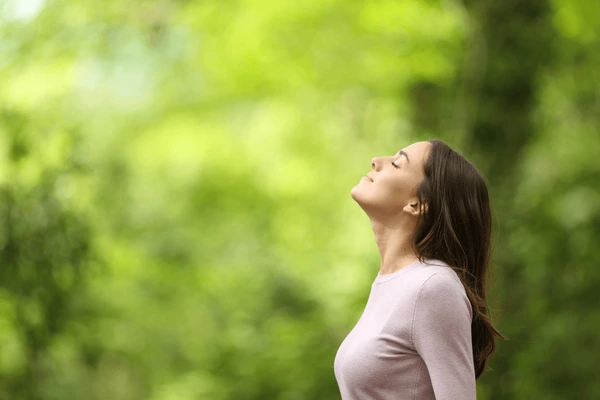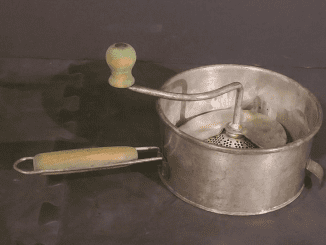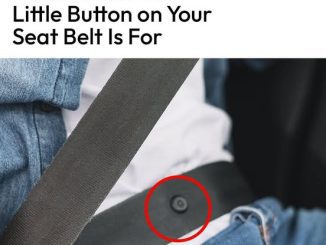Lower back pain is a common issue that affects millions of people around the world. While medication and physical therapy are often recommended, there are other natural remedies that can help alleviate the discomfort. One such remedy is acupressure—a simple, yet powerful technique rooted in traditional Chinese medicine. With just your hands, you can apply pressure to two specific points near your hips that may help relieve lower back pain.
In this article, we’ll explore what acupressure is, the specific points to target, and how pressing these points can positively affect your body.

Understanding Acupressure: A Natural Path to Pain Relief
1. What is Acupressure?
Acupressure is a healing technique that involves applying gentle pressure to specific points on the body to relieve pain and promote overall well-being. Similar to acupuncture, which uses needles, acupressure targets the body’s energy pathways, or meridians, to restore balance and relieve blockages. Instead of needles, acupressure relies on hands, fingers, or small tools to stimulate the points.
The fundamental concept behind acupressure is that pressing on certain points can improve the flow of the body’s natural energy, known as “Qi” (pronounced “chee”). When Qi flows freely, the body feels balanced and strong, but when it’s blocked or unbalanced, it can result in discomfort or illness. By stimulating acupressure points, you can enhance energy flow and promote healing naturally.
2. How Acupressure Alleviates Lower Back Pain
Acupressure works by targeting muscles and nerves related to pain and discomfort. When you press specific points, it stimulates the nervous system, which can help release endorphins—the body’s natural painkillers. Additionally, acupressure can increase blood flow to the affected areas, reduce inflammation, and relax tense muscles.
For those suffering from lower back pain, especially due to sciatica or muscle tension, acupressure can offer relief by focusing on key points near the hips that directly impact the lower back.
The Key Acupressure Points for Lower Back Pain Relief
1. Bladder 48 (B48) – “Weiyang”
- Location: The B48 point, also called “Weiyang,” is located on the buttocks. You’ll find it about four finger-widths away from the spine, level with the fourth opening in the sacrum (the base of the spine).
- Effect on the Body: Pressing the B48 point can relieve lower back pain, hip pain, and sciatica. It’s especially effective for easing stiffness and tension in the lower back and buttocks. Additionally, this point can help alleviate pain related to the sacroiliac joint, a common source of lower back discomfort.
2. Gallbladder 30 (GB30) – “Huantiao”
- Location: Known as “Huantiao,” the GB30 point is on the outer side of the hip. To locate it, draw an imaginary line from the greater trochanter (the bony part on the side of your hip) to the sacrum. The GB30 point lies approximately two-thirds of the way from the sacrum, closer to the hip joint.
- Effect on the Body: GB30 is highly effective for relieving sciatica, lower back pain, and hip pain. Stimulating this point can help with muscular and nerve-related pain, and it also promotes circulation in the legs and hips. For people with limited mobility or stiffness due to back pain, GB30 can bring significant relief.
How to Apply Acupressure to the B48 and GB30 Points
Applying acupressure is simple and can be done at home. Follow these steps to target the B48 and GB30 points:
Step 1: Locate the Points
Using the descriptions above, find the B48 and GB30 points on your body. You may need to take some time to locate these points accurately. Gently pressing around the area should reveal a slightly tender spot, which is a good indicator that you’ve found the right spot.
Step 2: Apply Firm Pressure
Once you’ve found the points, use your thumb, knuckles, or a rounded object like the eraser end of a pencil to apply firm pressure. The pressure should be strong enough to feel discomfort but not pain. Hold this pressure for about 1-2 minutes on each point.

Step 3: Use Gentle Massage Movements
After applying pressure, gently massage the area in a circular motion. This helps stimulate the point further and promotes the flow of Qi. Spend 1-2 minutes massaging each point, using slow and controlled movements.
Step 4: Practice Deep Breathing
While applying acupressure, breathe deeply and slowly. This helps relax your muscles and enhances the effectiveness of the treatment. Focus on your breathing to stay calm and centered, which can make the experience more soothing.
Step 5: Repeat as Needed
For best results, repeat this acupressure routine 2-3 times daily or as needed. Consistency is key, and regular practice can enhance pain relief and overall relaxation.
The Science Behind Acupressure: Does It Really Work?
Acupressure has been used for centuries, but modern science is now catching up and examining its effectiveness. Studies suggest that acupressure can be highly effective in managing pain, including lower back pain. According to a study published in the Journal of Pain Research, participants who practiced acupressure reported significant reductions in chronic lower back pain over a few weeks of regular treatment.
Moreover, a study from the Journal of Alternative and Complementary Medicine found that acupressure was just as effective as physical therapy in reducing lower back pain and improving mobility. By stimulating certain pressure points, acupressure appears to trigger the release of endorphins, reduce inflammation, and promote blood flow—all contributing to pain relief.

When to Consult a Professional
While acupressure is generally safe and easy to do at home, it’s not always a substitute for professional medical advice. If your pain is severe, persistent, or accompanied by symptoms such as numbness, tingling, or loss of bladder control, you should seek medical attention. These could be signs of a more serious underlying condition that requires professional treatment.
Additionally, if you’re pregnant, have existing medical conditions, or are unsure about trying acupressure, consult a trained acupressure practitioner or healthcare provider. They can guide you on the best approach to safely incorporate acupressure into your pain management routine.
Conclusion: Acupressure for Lower Back Pain Relief
Acupressure offers a natural, non-invasive method for managing lower back pain. By applying pressure to key points like B48 and GB30 near the hips, you can experience relief from discomfort, improved circulation, and enhanced relaxation. While it may not be a cure-all, acupressure is a practical technique that you can easily incorporate into your daily routine.
Whether used on its own or as a complement to other treatments, acupressure is a valuable tool for anyone looking to manage lower back pain. So the next time you feel that familiar ache, try pressing these points near your hips—you might just find the relief you’ve been seeking.


